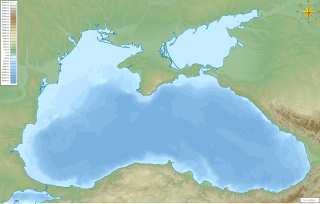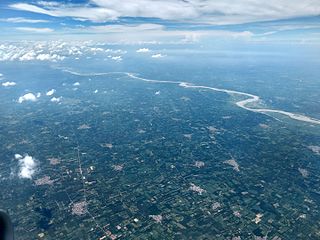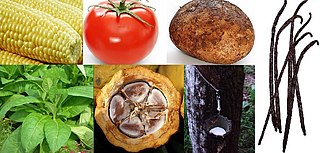Contents
The examples and perspective in this article may not represent a worldwide view of the subject.(March 2020) |
List of Mesolithic and Epipaleolithic settlements.
The examples and perspective in this article may not represent a worldwide view of the subject.(March 2020) |
List of Mesolithic and Epipaleolithic settlements.
| Name | Location | Culture | Period | Comment | |
|---|---|---|---|---|---|
| Franchthi Cave | Argolis, Balkans | c. 15,000 – 9,000 BP | Previously inhabited during the Upper Paleolithic, continuously inhabited into the Neolithic. | [1] | |
| Pulli settlement | Pärnu, Baltics | Kunda culture | c. 10,800 – 7,800 BP | [2] | |
| Lepenski Vir | Serbia, Balkans | Iron Gates culture | c. 11,500 - 8,000 BP | [3] | |
| Star Carr | North Yorkshire, Britain | c. 11,300 - 10,480 BP | |||
| Howick house | Northumberland, Britain | c. 9,600 - 9,500 BP | [4] | ||
| Name | Location | Culture | Period | Comment | Ref |
|---|---|---|---|---|---|
| Tell Qaramel | Queiq, Levant | Natufian | c. 18,890 - 12,980 BP | ||
| Aammiq | Beqaa Valley, Levant | Natufian | c. 14,000 – 12,200 BP | Later occupied during the Ubaid period. | [5] |
| Tell Abu Hureyra | Mesopotamia | Natufian | c. 13,500 – 11,500 BP | [6] | |
| Beidha | Jordan Valley, Levant | Natufian | c. 13,000 – 12,000 BP | ||
| Mureybet | Mesopotamia | Natufian | c. 12,200 – 11,700 BP | (Phase IA) Later occupied by the Khiamian and Mureybetian cultures. | [7] : 663–664 |
| Hatula | Judean Hills, Levant | Natufian | c. 12,150 – 11,320 BP | Later inhabited by the Khiamian and Sultanian cultures. | [8] |
| Jericho | Jordan Valley, Levant | Natufian | c. 12,000 – 11,500 BP | Succeeded by the Pre-Pottery Neolithic settlement. | |
| 'Ain Mallaha | Hula Valley, Levant | Natufian | c. 12,000 – 10,000 BP | [9] | |
The Holocene is the current geological epoch. It began approximately 9,700 years before the Common Era (BCE). It follows the Last Glacial Period, which concluded with the Holocene glacial retreat. The Holocene and the preceding Pleistocene together form the Quaternary period. The Holocene has been identified with the current warm period, known as MIS 1. It is considered by some to be an interglacial period within the Pleistocene Epoch, called the Flandrian interglacial.

The 9th millennium BC spanned the years 9000 BC to 8001 BC. In chronological terms, it is the first full millennium of the current Holocene epoch that is generally reckoned to have begun by 9700 BC. It is impossible to precisely date events that happened around the time of this millennium and all dates mentioned here are estimates mostly based on geological and anthropological analysis, or by radiometric dating.

The 8th millennium BC spanned the years 8000 BC to 7001 BC. In chronological terms, it is the second full millennium of the current Holocene epoch and is entirely within the Pre-Pottery Neolithic B (PPNB) phase of the Early Neolithic. It is impossible to precisely date events that happened around the time of this millennium and all dates mentioned here are estimates mostly based on geological and anthropological analysis, or by radiometric dating.
The 10th millennium BC spanned the years 10,000 BC to 9001 BC. It marks the beginning of the transition from the Palaeolithic to the Neolithic via the interim Mesolithic and Epipaleolithic periods, which together form the first part of the Holocene epoch that is generally believed to have begun c. 9700 BC and is the current geological epoch. It is impossible to precisely date events that happened around the time of this millennium, and all dates mentioned here are estimates mostly based on geological analysis, anthropological analysis, and radiometric dating.

The Black Sea deluge is the best known of three hypothetical flood scenarios proposed for the Late Quaternary history of the Black Sea. One other flood scenario proposes a rapid, even catastrophic, rise in sea level of the Black Sea.
Mureybet is a tell, or ancient settlement mound, located on the west bank of the Euphrates in Raqqa Governorate, northern Syria. The site was excavated between 1964 and 1974 and has since disappeared under the rising waters of Lake Assad. Mureybet was occupied between 10,200 and 8,000 BC and is the eponymous type site for the Mureybetian culture, a subdivision of the Pre-Pottery Neolithic A (PPNA). In its early stages, Mureybet was a small village occupied by hunter-gatherers. Hunting was important and crops were first gathered and later cultivated, but they remained wild. During its final stages, domesticated animals were also present at the site.

The late Pleistocene is an unofficial age in the international geologic timescale in chronostratigraphy, also known as upper Pleistocene from a stratigraphic perspective. It is intended to be the fourth division of the Pleistocene Epoch within the ongoing Quaternary Period. It is currently defined as the time between c. 129,000 and c. 11,700 years ago. The late Pleistocene equates to the proposed Tarantian Age of the geologic time scale, preceded by the officially ratified Chibanian and succeeded by the officially ratified Greenlandian. The estimated beginning of the Tarantian is the start of the Eemian interglacial period. It is held to end with the termination of the Younger Dryas, some 11,700 years ago when the Holocene Epoch began.

The Ghaggar-Hakra River is an intermittent river in India and Pakistan that flows only during the monsoon season. The river is known as Ghaggar before the Ottu barrage at 29.4875°N 74.8925°E, and as Hakra downstream of the barrage in the Thar Desert. In pre-Harappan times the Ghaggar was a tributary of the Sutlej. It is still connected to this paleochannel of the Sutlej, and possibly the Yamuna, which ended in the Nara River, presently a delta channel of the Indus River joining the sea via Sir Creek.
This is a list of all known or suspected Atlantic hurricanes up to 1599. Although most storms likely went unrecorded, and many records have been lost, recollections of hurricane occurrences survive from some sufficiently populated coastal areas, and rarely, ships at sea that survived the tempests.

Tlapacoya is an important archaeological site in Mexico, located at the foot of the Tlapacoya volcano, southeast of Mexico City, on the former shore of Lake Chalco. Tlapacoya was a major site for the Tlatilco culture.
The Holocene calendar, also known as the Holocene Era or Human Era (HE), is a year numbering system that adds exactly 10,000 years to the currently dominant numbering scheme, placing its first year near the beginning of the Holocene geological epoch and the Neolithic Revolution, when humans shifted from a hunter-gatherer lifestyle to agriculture and fixed settlements. The current year by the Gregorian calendar, AD 2023, is 12023 HE in the Holocene calendar. The HE scheme was first proposed by Cesare Emiliani in 1993, though similar proposals to start a new calendar at the same date had been put forward decades earlier.

New World crops are those crops, food and otherwise, that were native to the New World before 1492 AD and not found in the Old World before that time. Many of these crops are now grown around the world and have often become an integral part of the cuisine of various cultures in the Old World. Notable among these crops are the Three Sisters: maize, winter squash, and climbing beans.
The Nachcharini cave is located at a height of 2,100 m (6,889.76 ft) on the Nachcharini Plateau in the Anti-Lebanon Mountains near the Lebanese/Syrian border and among the most elevated Natufian and Khiamian hunter-gatherer occupation sites found to date.
Bouqaia is a basin in the Homs Gap, Syria, at the foot of the Marmarita hills.

Monrepos is an archaeological research centre and a museum of human behavioural evolution located at Schloss Monrepos in Neuwied. The development of our modern human behaviour in the Palaeolithic and Mesolithic is studied at the research centre and the findings of these studies are conveyed to the public in the museum. Monrepos is one of the leading institutions for the research of early human history.